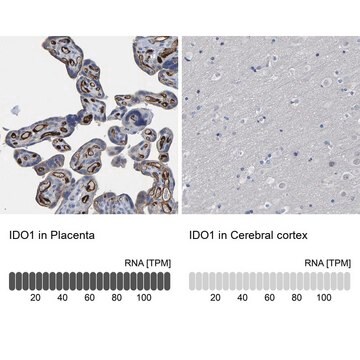MAB1992
Anti-Integrin α3β1 Antibody, clone M-KID2
clone M-KID2, Chemicon®, from mouse
Synonym(s):
VLA-3
About This Item
Recommended Products
biological source
mouse
Quality Level
antibody form
purified immunoglobulin
antibody product type
primary antibodies
clone
M-KID2, monoclonal
species reactivity
human
manufacturer/tradename
Chemicon®
technique(s)
ELISA: suitable
immunocytochemistry: suitable
immunohistochemistry: suitable (paraffin)
immunoprecipitation (IP): suitable
radioimmunoassay: suitable
isotype
IgG1
NCBI accession no.
UniProt accession no.
shipped in
wet ice
target post-translational modification
unmodified
Gene Information
human ... ITGA3(3675)
General description
Specificity
Immunogen
Application
Immunohistochemistry (works on Acetone-fixed paraffin-embedded tissues)
ELISA/RIA
Immunoprecipitation. When immunoprecipitated samples are run on SDS-PAGE under a) non-reducing conditions, two bands will be detected with an apparent molecular weight of 110 and 150kDa; and b) reducing (2% B-ME) conditions, a single molecular species of 130kDa is detected. Under reducing conditions both alpha3 and beta1 subunits run with the same apparent molecular weight.
Optimal working dilutions must be determined by end user.
Physical form
Storage and Stability
Analysis Note
Cell line: KJ29 renal carcinoma adherent cells.
Tissue: Kidney; antibody reacts with basal layer podocytes and basement membrane of distal tubules.
Other Notes
Legal Information
Not finding the right product?
Try our Product Selector Tool.
recommended
Storage Class Code
12 - Non Combustible Liquids
WGK
WGK 2
Flash Point(F)
Not applicable
Flash Point(C)
Not applicable
Certificates of Analysis (COA)
Search for Certificates of Analysis (COA) by entering the products Lot/Batch Number. Lot and Batch Numbers can be found on a product’s label following the words ‘Lot’ or ‘Batch’.
Already Own This Product?
Find documentation for the products that you have recently purchased in the Document Library.
Our team of scientists has experience in all areas of research including Life Science, Material Science, Chemical Synthesis, Chromatography, Analytical and many others.
Contact Technical Service



